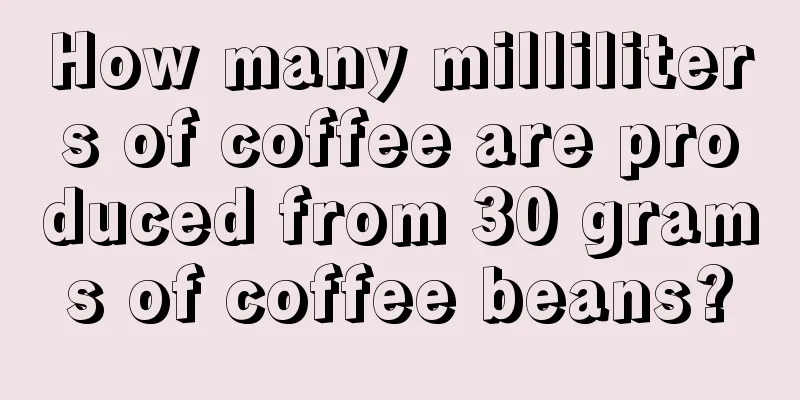How long does it take to brew coffee?

coffeeTime comparison and advantages and disadvantages of various coffee brewing methodsDifferent coffee brewing methods have different time requirements and characteristics. Drip coffee is a common brewing method that usually takes 5 to 7 minutes. The advantage of this method is that it is simple to operate and suitable for large-scale production. However, due to the slow water flow, it may result in a bland coffee taste. French press coffee requires about 4 minutes of soaking time. Its advantage is that it can extract the rich oil and flavor of coffee beans, making the coffee taste rich. However, French press requires a longer soaking time and the filtration is not fine enough, which may leave more coffee grounds. Espresso is a quick way to make coffee, usually in just 25 to 30 seconds. This method can quickly extract the strong flavor of coffee, and produce a rich texture and fine foam. However, due to its high-pressure operation, it has high requirements for coffee beans and high equipment costs. Finally, siphon coffee is also an interesting method that usually takes 6 to 8 minutes. This method uses the vacuum principle to extract the coffee, which can produce a balanced and layered coffee. However, siphon coffee machines are more complicated and more troublesome to clean and maintain. Key factors that determine coffee brewing timeThe brewing time of coffee is affected by many factors, the most critical of which include water temperature, grind size of coffee beans and the performance of coffee machine. Firstly, water temperature has a direct impact on the extraction speed of coffee. The ideal water temperature is usually between 90 and 95 degrees Celsius. If the water temperature is too high, the coffee may be over-extracted and produce bitter taste; if the water temperature is too low, it may lead to under-extraction and the coffee tastes weak. Secondly, the grind size of the coffee beans will also affect the brewing time. Finely ground coffee beans have a larger surface area and are extracted faster, making them suitable for quick brewing methods such as espresso. In contrast, coarsely ground coffee beans are suitable for longer brewing methods such as French press. The difference in grind size will directly change the flavor and strength of the coffee. In addition, the performance of the coffee machine will also significantly affect the brewing time. For example, the water flow rate of a drip coffee machine and the efficiency of the heating system will affect the brewing time. High-end espresso machines can control pressure and temperature more precisely, ensuring that rich flavored coffee is produced in a short time. In short, by adjusting these factors, you can optimize the brewing time of your coffee to achieve the ideal coffee flavor. Understanding and mastering these factors will help you brew the perfect cup of coffee every time. A practical approach to discovering the optimal coffee brewing timeFinding the best brewing time for your taste requires experimentation and adjustment. First, it is recommended to start with the recommended time range. For example, for drip coffee, you can try 5 minutes first, and then adjust the time according to your personal taste. Record the brewing time and taste experience of each trial to find the best time point. Secondly, you can try changing the grind size of the coffee beans. In each experiment, use different grind sizes and observe the effect on the taste of the coffee. Coarse grinds usually take longer to extract flavors, while fine grinds extract flavors faster. Finding the right grind size can help you adjust the brewing time to get the ideal taste. In addition, trying to adjust the water temperature is also an effective method. Although most coffee machines already have a default water temperature setting, you can manually adjust the water temperature to observe the effect of temperature changes on the taste of coffee. Higher or lower water temperatures will change the flavor of the coffee, thus affecting the optimal brewing time. Finally, regular tasting and recording are the key to finding the best time. Keep a record of your experiments, compare the effects of different times and methods, and gradually adjust until you find the cooking time that best suits your taste. |
<<: Chocolate flavored coffee beans
>>: Cassia seeds and coffee beans
Recommend
South Africa: The charm and innovation of coffee beans
The charm and innovation of South African coffee ...
How much do you know about the hidden dangers of drinking coffee for a long time?
Long-term coffee drinking may bring some hidden d...
Yogurt mixed with coffee, hidden mysterious effects
Yogurt mixed with coffee not only has a unique ta...
A comprehensive introduction to Starbucks Reserve coffee beans
A comprehensive introduction to Starbucks Reserve...
The coffee bean breaker brings out the charm of coffee beans
The coffee bean breaker brings out the charm of c...
Moka Pot Coffee: Time Revealed
Moka Pot Coffee: Time Revealed The Moka pot is a ...
Pu'er Coffee: Exploring Yunnan's Specialty Drink
Pu'er Coffee: Exploring Yunnan's Specialt...
How to brew coffee powder to make it taste good? Master these skills so that you can enjoy a rich and mellow coffee experience every day
How to brew coffee powder to make it taste good? ...
Fat-reducing coffee, a new favorite for fat burning, a new experience for weight loss
Fat-reducing coffee has become a new favorite for...
Girls coffee hint, ignite our hearts
The charm of girls' coffee Coffee is an intox...
U.S. Coffee’s private room for two people, where you can enjoy coffee time, how much does it cost?
U.S. Coffee provides private rooms for two people...
The charm of coffee: from leaves to fragrant black temptation
The origin of coffee Coffee, a fragrant black dri...
The learning journey of a barista: an endless pursuit
The learning journey of a barista: an endless pur...
Coffee beans Arabica: taste the pure coffee aroma
Coffee beans Arabica: taste the pure coffee aroma...
How to distinguish the acidity and bitterness of coffee beans
Coffee is one of the most popular drinks in the w...









